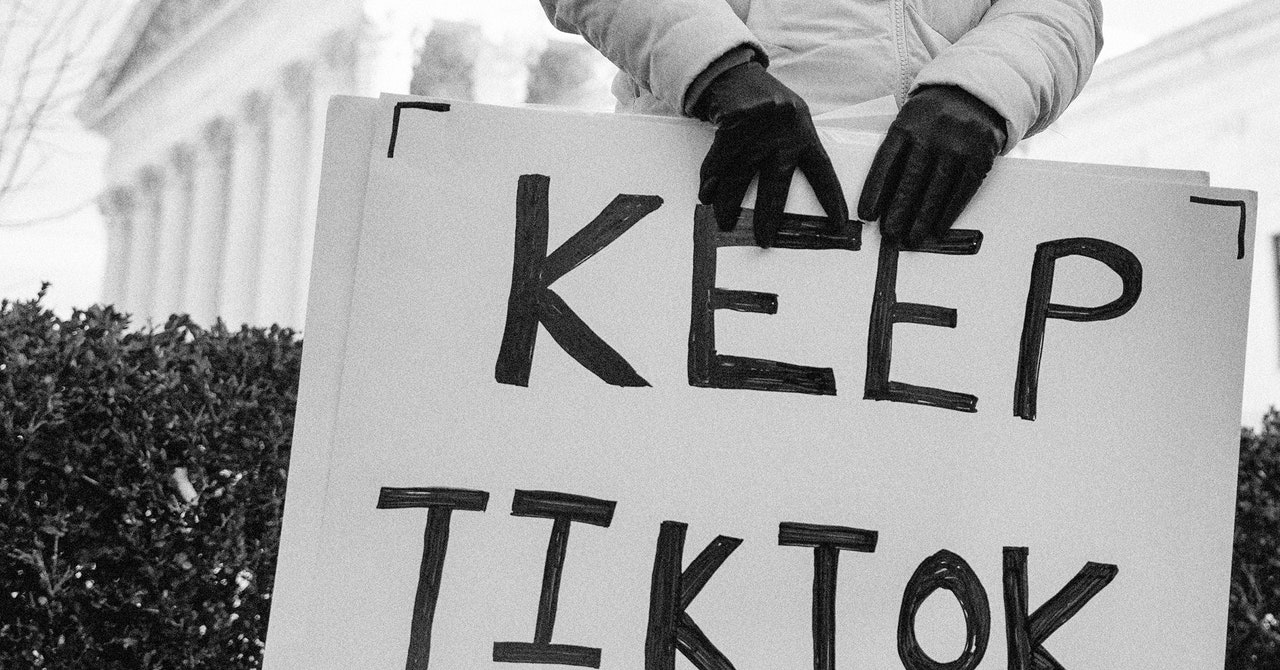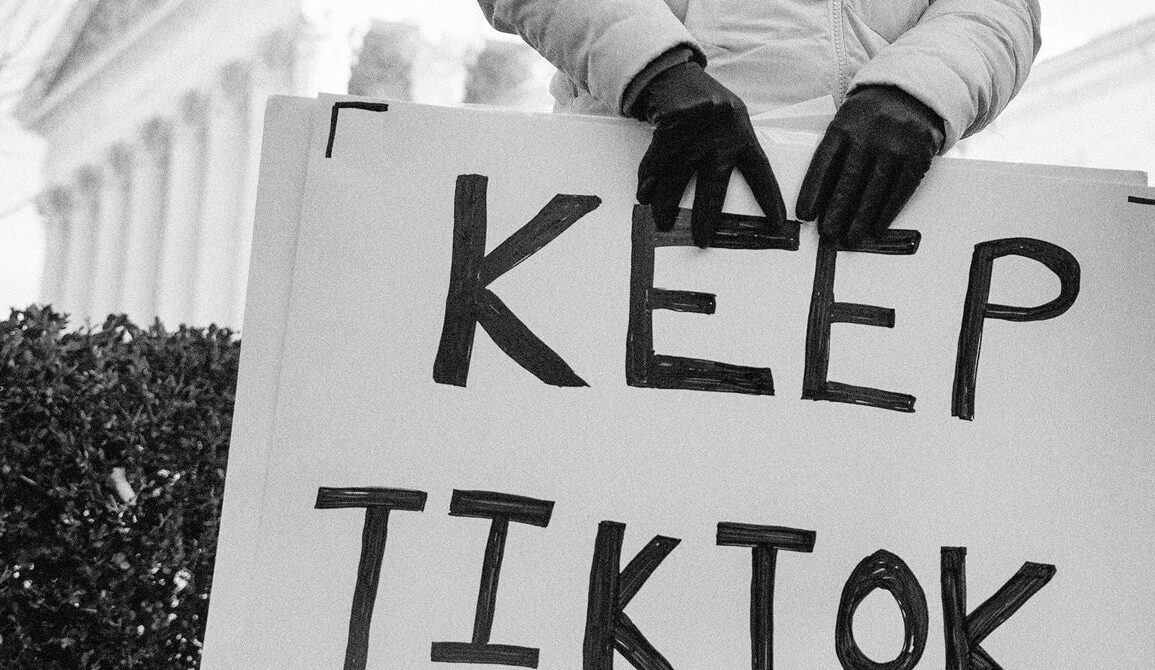
Lavelle Dunn never dreamed of being on screen. In 2019, he moved from Chicago to Los Angeles with plans of working behind the scenes in Hollywood. He made connections at networking events. He tried his hand at screenwriting. “I never accepted that I could be successful in front of the camera, and vulnerably so,” he says. But success quickly followed in 2021 when Dunn—like many people in need of an outlet during the first years of the pandemic—joined TikTok. In a post from that May, he reviewed watermelon jerky from Trader Joe’s. “I’m gonna give it a gah boom bam,” he says enthusiastically in the video, which netted 1 million views overnight (it was a hot-button snack, as it turns out). That’s the moment Dunn knew: TikTok was the key.
As @TheLavelleShow, Dunn specializes in lifestyle content—“tips and tricks that ultimately center around my life”—that now reaches some 730,000 people. In the last year he’s cashed in on brand partnerships with Whole Foods, Marriott, Taco Bell, and The Cheesecake Factory. He made “well over six figures” in 2024, he says—Dunn declined to share the exact amount—and was able to quit his full-time job as a hotel concierge. “It took me time to even accept like that’s what I am, and to publicly say, like, ‘Oh yeah, I’m an influencer,’” he tells me when we speak by Zoom. “I just never thought that’s where my career would ultimately take me.”
On December 30, Dunn again found himself in front of the camera—this time for a very different reason. He’d just returned from a trip to New Orleans and suddenly felt compelled to speak out about the TikTok ban. “This has all really been the highest point of my life so far,” he said in a two-minute video, tears falling down his face. “This app could really be gone next month. And I really hate to be on here crying about this, but this app could really be gone. Years of hard work could just be gone.”
Will TikTok survive? It’s what many users like Dunn are waiting to find out as the US Supreme Court decides whether or not to uphold a law that would force China-based parent company ByteDance to sell TikTok to US owners or be blocked. Many believe the ban would be a monumental blow to creators. Currently, 170 million Americans use TikTok; several, like Dunn, rely on it as their main generator of income. According to the Pew Research Center, the app is used by one-third of all US adults.
The dispute in front of the Supreme Court boils down to whether the US government’s belief that TikTok is a national security threat supersedes the First Amendment right to free speech. In 2023, President Joe Biden signed into law the Protecting Americans From Foreign Adversary Controlled Applications Act (PAFACA), which requires ByteDance to sell TikTok’s US operation by January 19 or risk getting banned in the US.
On Friday, TikTok made its case before the Supreme Court. Noel Francisco, arguing on behalf of TikTok, opened by making a case for free speech and calling out what he saw to be the government’s excessive and undue concerns around national security. When asked by the judges why TikTok had yet to divest, Francisco said it would take “many years” to rebuild the source code, and the result would be an altogether different platform from TikTok.
The Biden administration’s solicitor general, Elizabeth B. Prelogar, argued that Congress had every right to enact a ban, saying that the Chinese government could spy on Americans, in addition to their contacts, through TikTok. “It’s about trying to close off a vulnerability that a foreign nation’s adversary could exploit,” she said. Outside the courtroom, dozens of TikTok users rallied in support of the app. Given the January 19 deadline, the court is likely to make a decision next week—one that could have lasting ramifications on the future of social media for creators. If it goes into effect, it remains unclear if, or how, president-elect Trump will enforce the ban once in office.
“I would ultimately feel like I lost it all,” Dunn says when I ask him about the ban. “I don’t think people realize this is how I keep a roof over my head. It’s like people saying your company’s about to go out of business and you have zero control over it.”
In addition to brand deals, Dunn participates in TikTok’s creator rewards program, which pays creators with a minimum of 10,000 followers and 100,000 monthly views to make original minutes-long content. Between brand partnerships and money made through the program, Dunn, who is 30, tells me he averaged several “five-figure months” in 2024. “The loss of jobs and income from this is going to be far greater than the national security risks they are screaming about,” he says.
TikTok Shop, the app’s ecommerce feature, was a game changer for small business owners when it debuted in September 2023. After navigating a few early hiccups—which included, of all things, snail slime—TikTok Shop proved formidable; the app’s surge in vendors outpaced competitors like Amazon, which TikTok ultimately wants to replace (or at least dethrone). Beauty products and womens wear are often the highest-selling items across the platform. According to Shopify, by 2023 12 percent of TikTok Shops were US-based, with 45 percent of Americans having purchased through TikTok Shop. In 2023, daily US sales topped $7 million.
Renee McClintock, a 29-year-old mother of two, is one of the app’s more tenacious entrepreneurs. You name it, she’s sold it: electrolyte packets, a cotton candy machine, iPhone cases, blue jeans, vaginal probiotic gummies. Last summer, a video detailing how much she’d made in a week—$4,764.63—went viral. McClintock declined to speak with me for this story—she only does paid collaborations, starting at $150, she wrote in an email—but noted that since July, through the affiliate program, her gross merchandise volume was $600,000.
TikTok is not the only platform that allows creators to turn a profit, but it does seem to be the exception to the rule. YouTube, Instagram, and Twitch all provide various pathways for users to make money, whether through ads or affiliate links. But none of them have what TikTok has, says Jon Selman, vice president of influencer marketing at BenLabs, an agency whose clients include influencers Colin Keys, Savagemomlife, and Amaury Guichon.
“After Amazon, TikTok Shop has now become one of the biggest money drivers for brands,” Selman says. “They’ve invested a lot of money in the infrastructure, in shipping, in making it feel—I hate to say this—Amazon-y, because that is the standard of how you order online. Initially, the potential loss of that would be a pretty big blow. Brands would be scrambling.”
The ban would also thrust creators into uncharted territory. For as long as social media has been around, forced extinction was never so blatantly on the table. Many platforms have lost relevancy or simply died off—Friendster, Myspace, Vine—but never before has the US government pushed a social media platform into its own grave.
“Creators need contingency plans,” Selman adds. “People are looking for a one-size-fits-all fix—Where do I go from here? And there isn’t one.” Younger audiences may very well float to YouTube Shorts, while older millennials will use Instagram Reels. It’s all about knowing where your audience lives, he says.
In the interim, TikTok users have voiced outrage about the ban. A decision in favor of the US government would likely crater the livelihoods of creators, some of whom don’t know where to go next. “Honestly, it’s hard to truly prepare for the ban,” says Kaityn Gale, a 23-year-old lifestyle influencer in Colorado. “Other platforms just don’t offer the same algorithm or opportunity. It’s a lot harder to monetize. I think the government fails to recognize how great of an impact this will have on American lives and the economy. TikTok has allowed me to be free of financial anxiety.”
No matter what happens, Dunn is determined to make it work. He recently launched a YouTube page and is figuring out how to better leverage his Instagram account. “Everybody thinks I can just repost a TikTok to Instagram and YouTube, and it will play out the same—it doesn’t work like that,” he says.
So, where do you go from here, I ask him before we end our video call.
“When I think about the future of the creator economy—and I have to be honest—what worries me is creators that look like me, the Black and brown ones, the ones who may not have the necessary tools and resources to be successful in spaces that demand a more polished product,” he says. “TikTok has allowed for a lot of different creators who look different, who sound different, and who operate differently, to enter and be successful in this space. It’s going to be harder for those communities—that’s what no one is talking about.”
This post was originally published on this site be sure to check out more of their content








